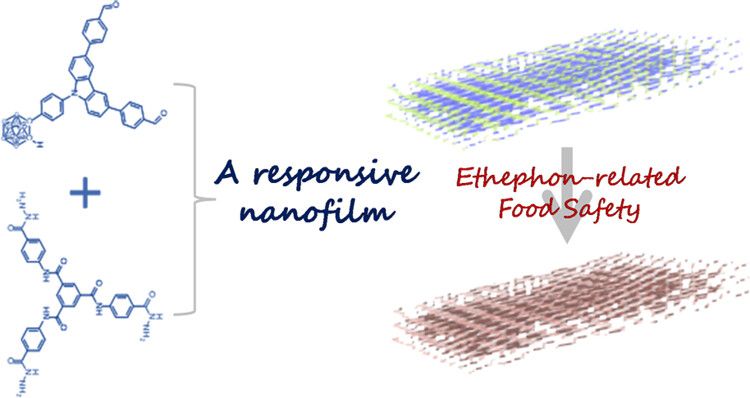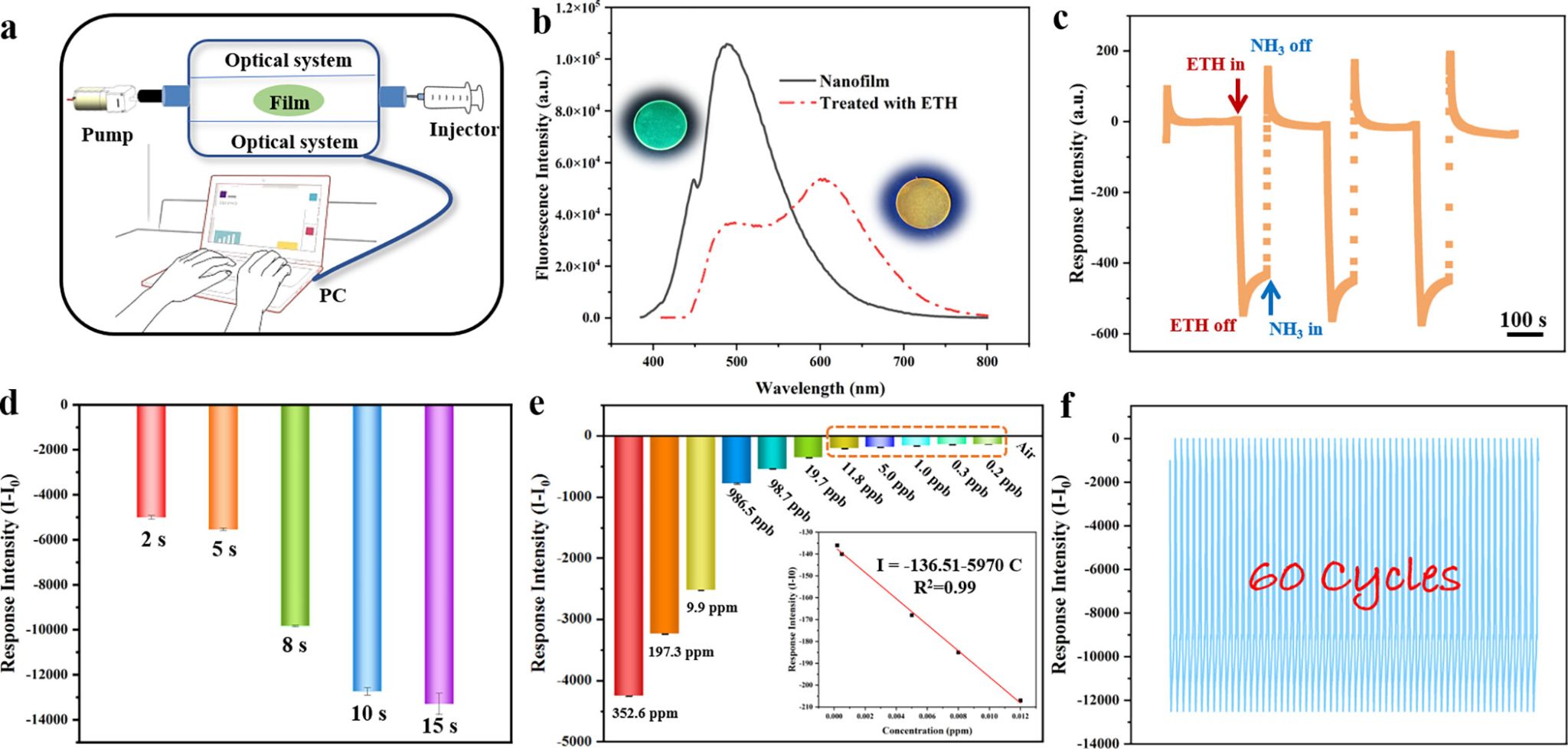
Qianqian Liu, Rongrong Huang, Jiaqi Tang, Helan Zhang*, Mei Liu*, and Yu Fang*. Anal. Chem., 2024, 96, 2559-2566.

Plant growth regulators (PGRs) are natural or artificial substances that are widely used in agriculture and horticulture to regulate plant growth and development. Proper PGRs uses can help maximize crop yield, quality, and resistance to environmental stressors. Ethephon (ETH) is a widely used PGR and functions via releasing ethylene in plants to accelerate crop ripening, shedding, and senescence. However, maximizing the benefits of ETH depends on appropriate dosage and timing using as improper use could lead to crop toxicity enrichment and excessive residues, which poses significant threat to food safety and environmental health. In fact, on-site and at real-time reliable detection of ETH has gained widespread attention.
Currently, effective detection of ETH on-site and at real time still remains a challenge because of its low molecular weight, high polarity, weak volatility, and lack of colors. Early gas chromatography (GC) technique was developed to indirectly quantify ETH by determining the amount of ethylene released or methylphosphonic acid produced. Liquid chromatography, spectrophotometry, mass spectrometry, and electrochemical methods were also developed for the detection of ETH. These approaches, however, are not only cumbersome, time-consuming, high-power consumption and expensive, therefore ruling out the possibility for on-site and at real-time use. The film-based fluorescent sensors (FFSs) are a new class of chemical sensors, which possess the features of high designability, low power consumption, small size, easy operation, low cost, and even contamination free. Additionally, the FFSs generally exhibit high sensitivity and fast response due to the inherent microenvironment sensitivity of the excited state property of the sensing materials. In fact, the FFSs have been proven invaluable in rapidly detecting and identifying concealed explosives, drugs, volatile organic compounds, as well as other toxic and hazardous chemicals.

Figure 1. (a) Synthesis of Nanofilms at Liquid-Liquid Interfaces and Air-Liquid Interfaces; (b) Dynamic Covalent Reactionduring Nanofilm Formation; (c) Structures of the Building Blocks and Schematic Representation of the Preparation of the Nanofilm at the Humid Air/DMSO Interface.

Figure 2. (a) Schematic of the sensing device, which mainly consists of three parts, a gas supply unit, the nanofilm-based sensor, and a data collection system; (b) Fluorescence emission spectra of the nanofilm before and after ETH treatment; (c) Detailed meanings of the response traces; (d) Sampling time optimization; (e) Responses of the sensor to ETH vapor of different concentrations, where each measurement was repeated five times, and the inset photos show the linear relationship between the response intensity and value of the analyte vapor concentration; (f) Reproducibility for the nanofilm-based sensor upon 60 cycles continuous tests.
In this work, we developed a nanofilm-based fluorescence film sensor (FFS) and realized highly efficient detection of ETH in vapor phase, where the detection limit (DL) is <0.2 ppb, the response time is less than 10 s, and the interference is almost free. The unusual sensing performance of the sensor was ascribed to the specific binding of the nanofilm to ETH and to its great porosity, which enables efficient adlayer mass transfer, a requirement for high signal-to-noise ratio. Moreover, visualization-based qualitative sensing is also realized. The nanofilm, a key component of the sensor, was prepared at the humid air/DMSO interface. The building blocks used were a specially designed fluorescent o-carborane derivative (CB-2CHO) and a cross-linker BTN possessing three acylhydrazine groups. The nanofilm as prepared is flexible, uniform, thickness tunable, and photochemically super stable. We believe our effort not only addresses the challenging issue of on-site and at real-time detection of ETH but also provides another route for developing new FFSs via sensing film innovation.
First Author: Liu Qianqian, master’s candidate, Shaanxi Normal University
Correspondence Authors: Prof. Fang Yu, Assoc. Prof. Liu Mei, Senior Engineer Zhang Helan, Shaanxi Normal University
Full Text Link: https://pubs.acs.org/doi/full/10.1021/acs.analchem.3c04999
 Latest Updates
Latest Updates






